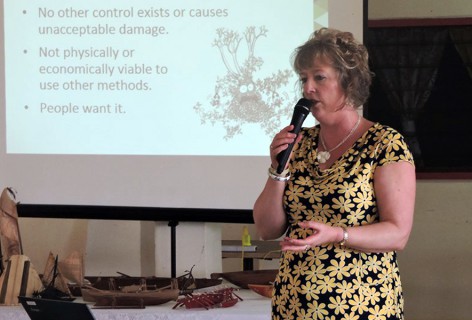Chromolaena gall fly
The chromolaena gall fly (Cecidochares connexa) occurs naturally from Central America to northern Argentina. The gall fly was first explored as a natural enemy when it was introduced into Indonesia for host specificity testing. After approval to release the gall fly there, it was introduced into several countries in the Pacific: Palau (1999), PNG (2001), Guam (2002), Northern Marianas (2003), and FSM (2004), as well as various countries in Africa and Asia. The gall fly was released more recently in Australia in 2018 and in the Marshall Islands in April 2024.
How would I recognise it and what is its lifecycle?
The adult flies are 3-5mm long with patterned wings. If abundant you may see them sitting on chromolaena plants. Adults live for up to 11 days and feed on nectar or just take water. Females lay eggs in the axils of stems. The eggs hatch in 4-7 days. Larvae feed internally causing galls to form which are characteristic swellings on the upper stems. There can be multiple galls on a one stem.
Larvae feed for 30-50 days before making a window in the stem through which the new adults later emerge. Pupation occurs within the gall. Males emerge first. The entire life cycle takes from 47 to 75 days or 60 days on average.
Adult gall fly
How can I get the most out of it?
The gall fly will naturally spread to new infestations within an island. However, if chromolaena infestations are found on other islands, it is possible to move the gall fly around by cutting stems with mature galls and taking them to other islands and tying them onto chromolaena plants. The flies will later emerge and infect these plants naturally.
